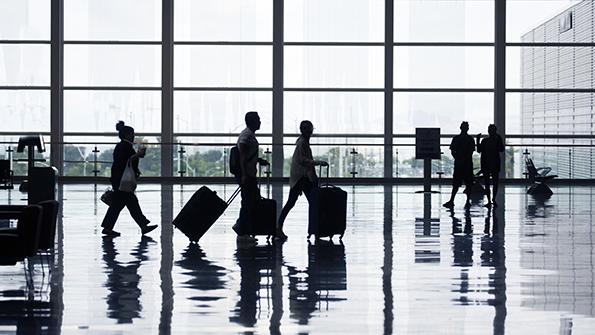
One of the most popular discussion questions these days is: When will air travel return to pre-COVID-19 levels? There is a wide spectrum of opinions. Most believe that after vaccines are widely distributed, leisure travel will come roaring back, thanks to pent-up demand. But what about business travel, which comprises 40-50% of airline revenues and most of their profits? Rather than a sharp spring back, I believe structural changes will slow the return of business travel, with crucial implications for industry stakeholders.
To assess the potential impact of COVID-19 on business travel, the Global Business Travel Association (GBTA) conducted a survey of 760 corporate travel managers and travel suppliers in mid-December. The results are eye-opening: Business travel spending will be 46% lower in 2021 than 2019. This aligns with a similar survey conducted by the Institute of Travel Management. Moreover, according to a CNBC Global CFO Council Survey, nearly half of chief financial officers expect that travel will never return to pre-COVID-19 levels.
Which types of business travel will be most affected? Business travel can be segmented into two broad categories. The first is market- and customer-facing, including sales calls, client consultations, site visits, industry conferences and networking. The second is intracompany, including company meetings, training, retreats and commuting to/from work.
According to the GBTA survey, customer-facing travel will suffer the least, with service trips (-28%) and sales visits (-33%) the least affected. This makes sense. Sales calls and relationship-building will not move to Zoom. As United Airlines CEO Scott Kirby recently stated, “the first time a company loses a sale by not traveling will be the last time.”
In contrast, intracompany travel will decline by 61%, according to the survey. The COVID-19 crisis accelerated by a decade or more the use of collaboration tools such as Teams and Zoom. Employees in the same organization already share a common culture and relationships; reducing intracompany travel will not only improve employee well-being but also add to the bottom line. Intracompany travel, which accounts for 25-30% of business travel, could be headed for a structural change.
The effect of even a modest decrease in business travel is significant. Consider the example of a pre-COVID-19 Boeing 777-300 transatlantic flight. According to the International Air Transport Association, the flight’s pre-COVID-19 revenue was $130,000, with the premium cabin comprising 45% of this total. This yielded a profit of $10,000. Today the same flight yields $77,000 in revenue—thanks to a dramatic decrease in premium-cabin revenue—and loses $25,000, despite higher belly-cargo revenue.
The implications of a structural change for business travel are significant. First, it will slow the return of air traffic to pre-COVID-19 levels. Corporate travel budgets are much stickier than consumer decisions to purchase leisure travel. Chief financial officers will soon create 2022 spending plans, many of which will be spartan. This means air travel likely will not return to pre-COVID-19 levels until at least late 2023.
Second, network carriers could take much longer than anticipated to repair their balance sheets, as business travel underpins most of their profits. Conversely, low-cost carriers, which are far less dependent on business travel, will expand their fleets and gain market share.
Third, the decline in business travel will strengthen the trend toward aircraft downgauging. It also will amplify long-haul route fragmentation, which benefits the Boeing 787 and the Airbus A350 and forthcoming A321XLR, and will increase headwinds for larger aircraft such as the 777X and A350-1000. Twin-aisle production rates will remain depressed for the foreseeable future.
Fourth, it increases the pressure for Boeing to build a new midsize aircraft—ideally a single-aisle in the 200-240-seat range—to directly confront Airbus’ A321XLR challenge. This needs to happen soon, or Boeing’s market share will fall below 40%. Given Boeing’s high debt levels, it will need risk-sharing partners to execute a $12-15 billion clean-sheet aircraft. This means its contentious relationships with major suppliers must end.
Suppliers also will feel the impact of reduced business travel. Raw materials and interior suppliers, for example, depend heavily on twin-aisles to drive business volumes. Rolls-Royce depends exclusively on these aircraft, which is one reason its outlook is so challenging. Many airframe maintenance providers also are highly dependent on multimillion-dollar twin-aisle heavy checks and modifications.
Will business travel change forever, or are the survey results a classic overreaction during a crisis? It is too early to tell, but the logic for reducing intracompany travel is compelling. Industry stakeholders would be wise to plan for this possibility.
The views expressed are not necessarily those of Aviation Week.






Comments